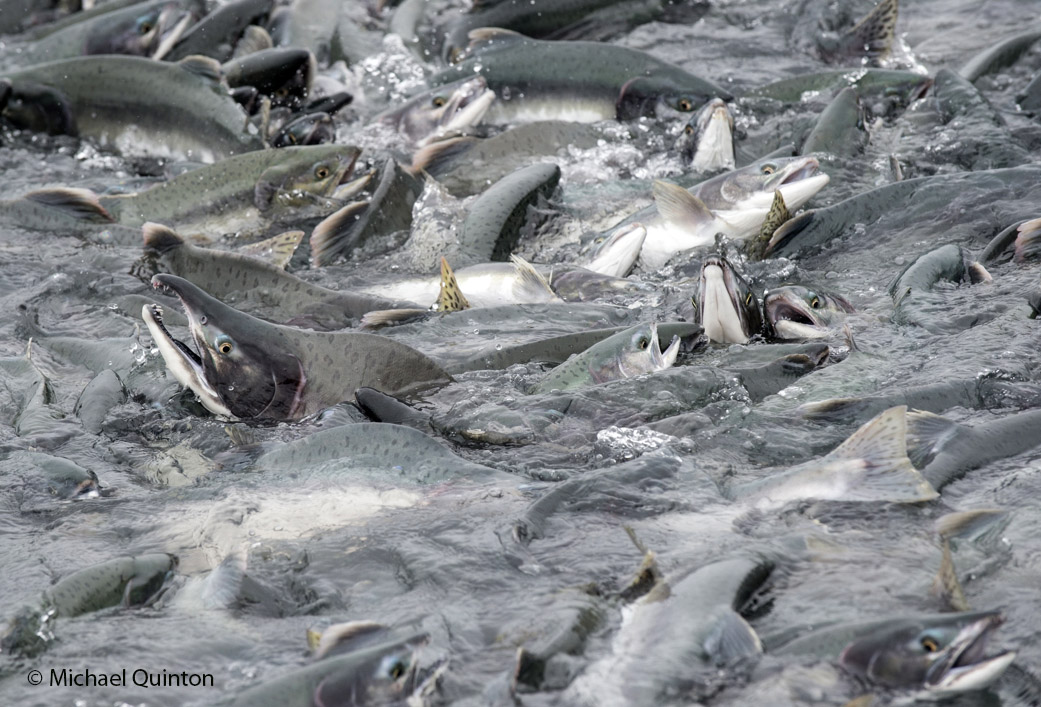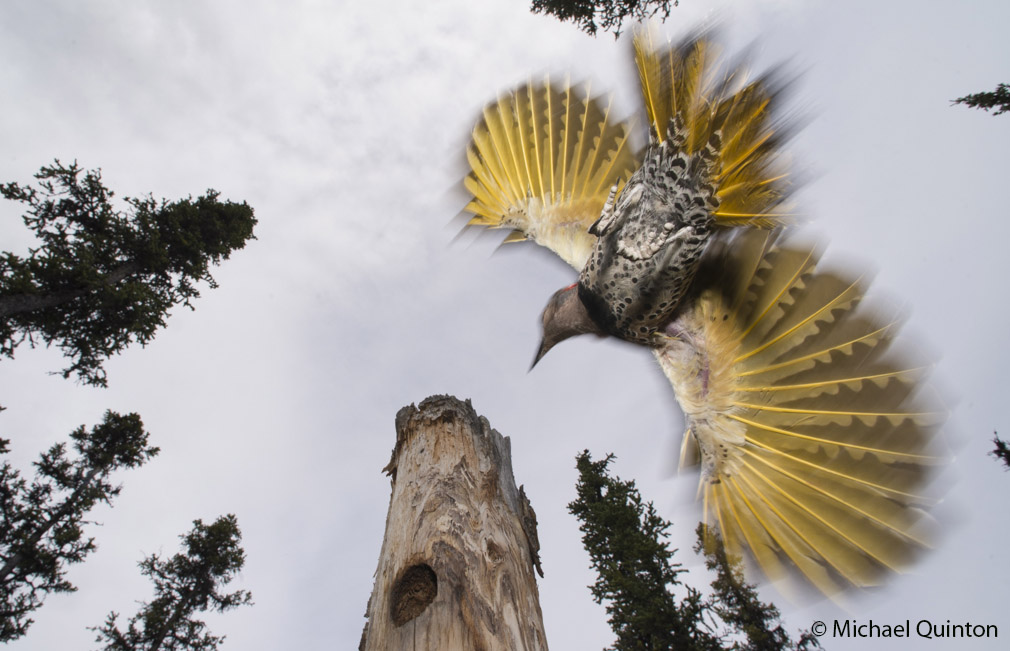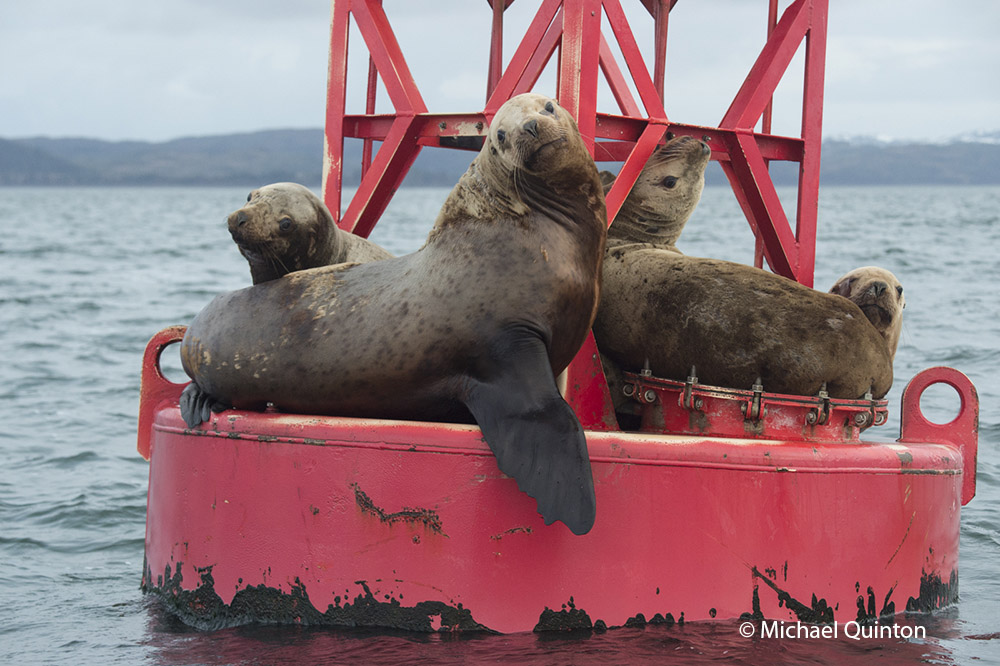Pink salmon show up in estuaries in early July by the millions. Pink salmon are Alaska’ most common salmon species. They also have the shortest life cycle than other salmon species. Pinks return to freshwater to spawn when they are two years old and immediately begin to change from silver to green and dark gray. And, males form hooked jaws and humped backs. Continue reading
Author Archives: admin
NESTING FLICKERS
A female northern flicker approaches the nesting cavity.
Life at the nest of northern flickers is at a frantic level. Most of the long, Alaskan summer days keeps the adults working at a breathless pace. The pair at this nest take turns guarding the nest from the resident red squirrel or trespassing northern flickers and taking forays out into the black spruce forest to hunt for their main food, wood ants and their larva. When the female arrives back at the nest cavity with food for the young, the male departs.
To listen to the audio clip, click on left side of the bar. Volume at right. Adult male northern flicker responds to his mate appearing near the nest. Then listen as female enters nesting cavity to feed chicks. Continue reading
THE YELLOW HAMMER
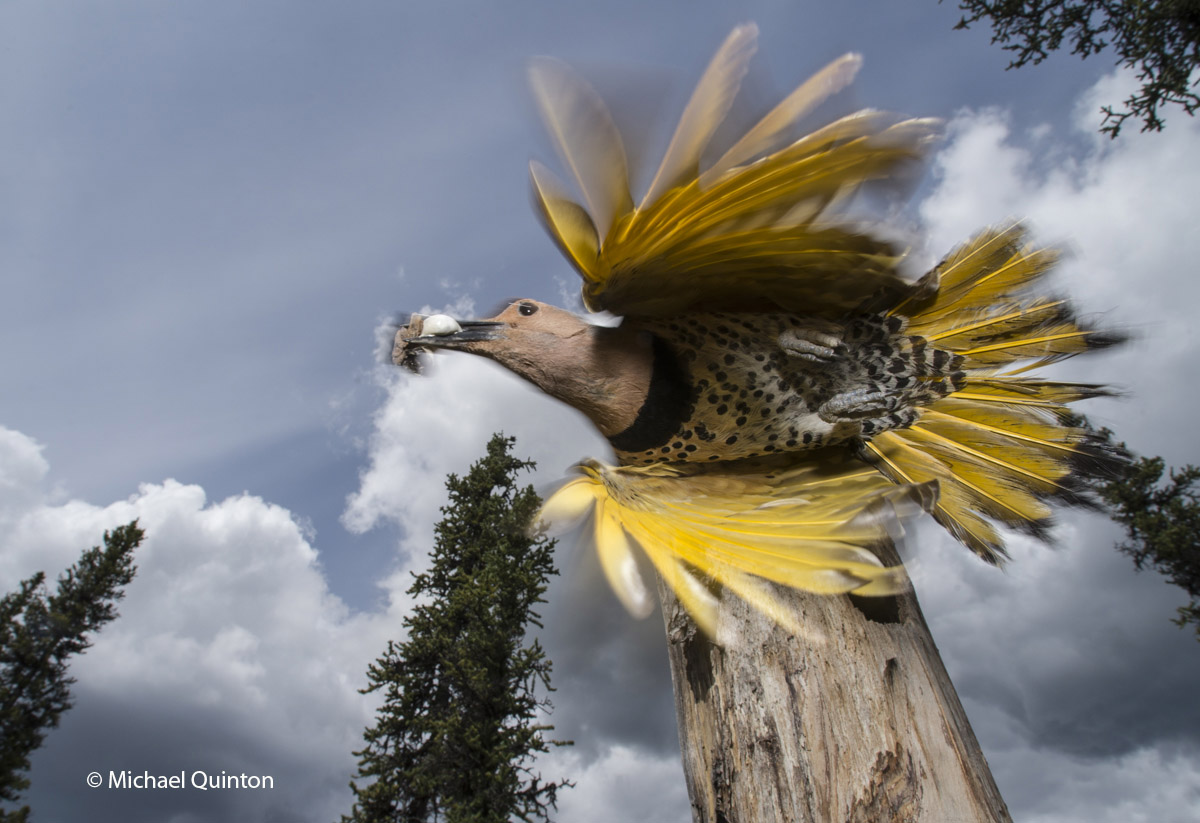 TAKING OUT THE TRASH A female northern flicker bursts out of her nesting cavity with a fecal sack.
TAKING OUT THE TRASH A female northern flicker bursts out of her nesting cavity with a fecal sack.
A pair of beautiful northern flickers has again taken up residence in our big back yard to raise a new generation. Their distinct repertoire of territorial calls and hammering adds a welcome touch of wilderness. These yellow hammers are perhaps the most striking birds of the northern boreal forest. As they dart about their forest territory flashing their brilliant feathers of gold I am unable to resist the temptation. I simply must try to capture some of their uncommon beauty with my cameras. Continue reading
RUFFED RHYTHM
 A ruffed grouse male moves slowly through thick cover as it feeds on buds, last years berries and new leaves.
A ruffed grouse male moves slowly through thick cover as it feeds on buds, last years berries and new leaves.
Interior Alaska is definitely spruce grouse country. But along creeks and river bottoms, in old burns, in fact almost anywhere where several species of trees grow in thickets, narrow veins of ruffed grouse habitat can be found. Along the Slana River not far from where it enters the still modest Copper River, aspen, poplar, birch, white and black spruce, alder and a jumble of willow species form thickets where the cryptic ruffed grouse lives. Rose and high bush cranberry in the understory provide year round food for the few grouse that survive there. Continue reading
BEASTS OF THE BUOY
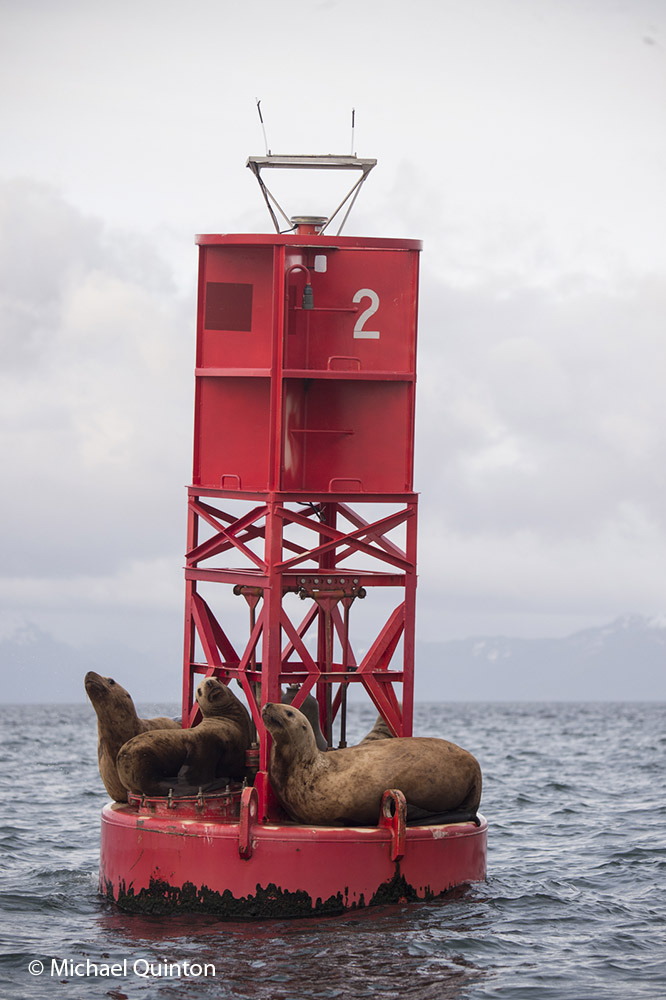 Stellar’s sea lions rest on a buoy marking the most remote edge of the Copper River Delta.
Stellar’s sea lions rest on a buoy marking the most remote edge of the Copper River Delta.
Stellar’s sea lions love to hang out on buoys. Safe from rare but ever-present packs of killer whales, the same sea lions that are so timid and quick to disappear when approached by our boat, feel no desire to leave the buoy.
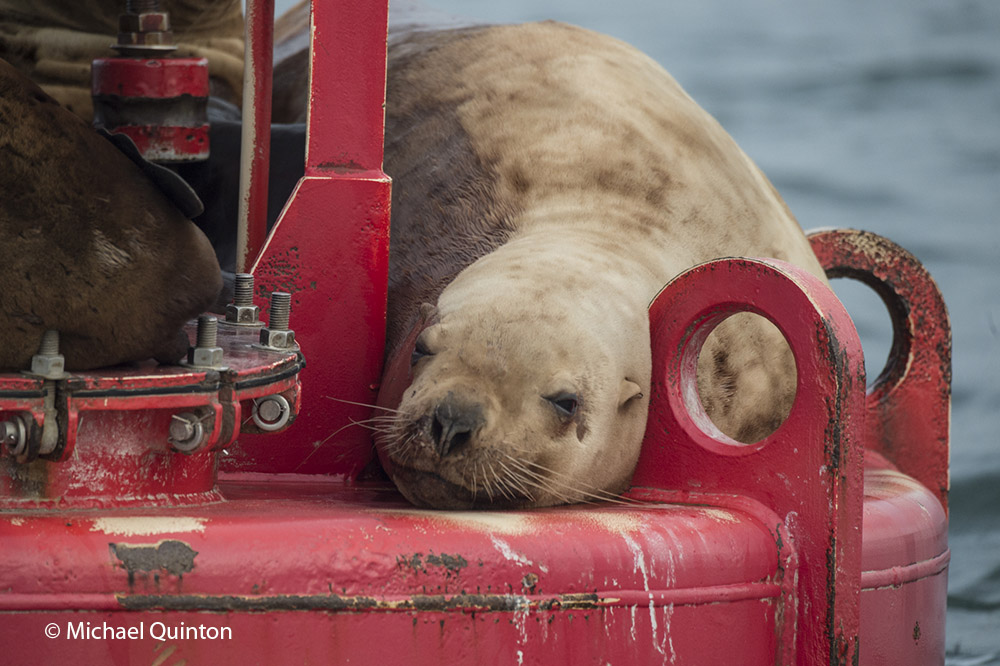 As they are rocked to sleep, the constant clanging of the bell must be something of a lullaby.
As they are rocked to sleep, the constant clanging of the bell must be something of a lullaby.
SPRING AT SEA OTTER BAY
Technically, spring has arrived in the Alaskan Interior, but winter is rather reluctant to let go. So for the past three years I have left home in the first week of April to see if spring is having any better luck taking hold along the coast-about a hundred miles away as the raven flies. I am not disappointed. Spring is in full swing. But the weather along the coast is, as usual wet and windy. So once again I settle into a familiar routine, hanging out in a sheltered bay where sea otters congregate during unsettled weather and indulging in the very enjoyable task of observing and photographing the gentle and photogenic sea otters. Continue reading
RUFUS CREEK IN WINTER
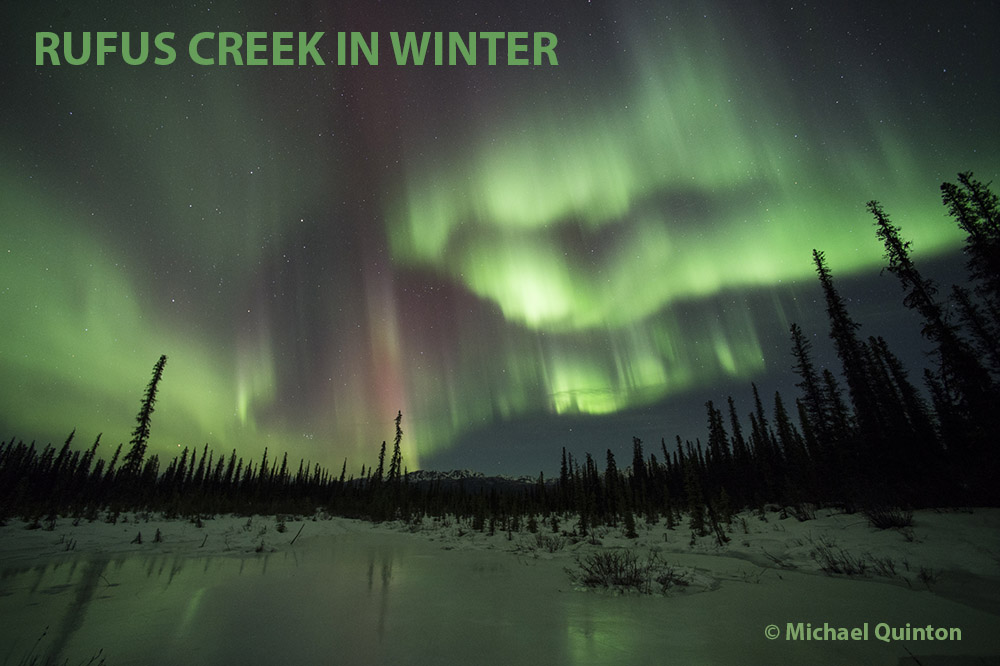 Overflow ice floods Rufus Creek as Aurora Borealis dance.
Overflow ice floods Rufus Creek as Aurora Borealis dance.
Rufus Creek flows through our ten acres of black spruce forest on its way North to the Slana River. The northern boreal forest is a patchwork of dynamic land forms and plant communities, niches that a few hardy species of wildlife can exploit. Diversity of life here is low but the species and settings are spectacular. Continue reading
LAST HOMESTEAD
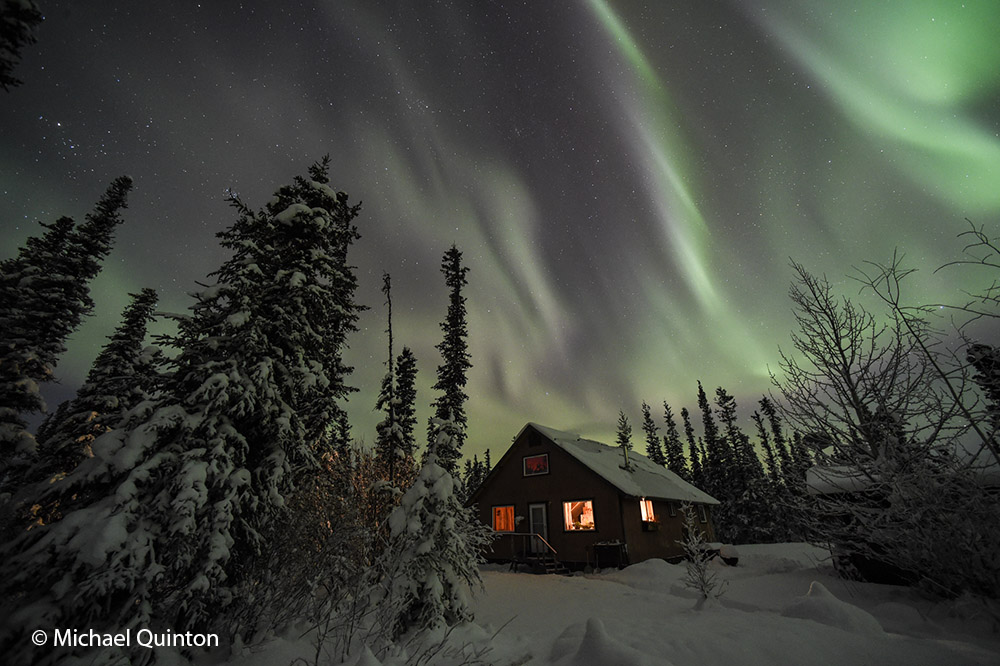 Our home in the wilderness.
Our home in the wilderness.
This post is in support of the recent story that appeared in the February 2016 issue of Country Magazine. The story is about our families life in Alaska. The following photographs are some that did not make the final layout in the magazine. Several Country Magazine readers have requested to see more photos. This is for you. Continue reading
RAMS IN RUT
All summer and fall dall rams have shunned the groups of ewes and lambs. The rams prefer the high country where they hang out in small bachelor bands. With the approach of winter their association begins to fray as they begin to sort out a pecking order. The rams stand in tight groups, displaying their massive curls trying to intimidate. They kick, growl, shove, and finally engage in dramatic displays of head butting. For the most part dominance has been been sorted out when they join the herds of ewes and lambs already on the winter range.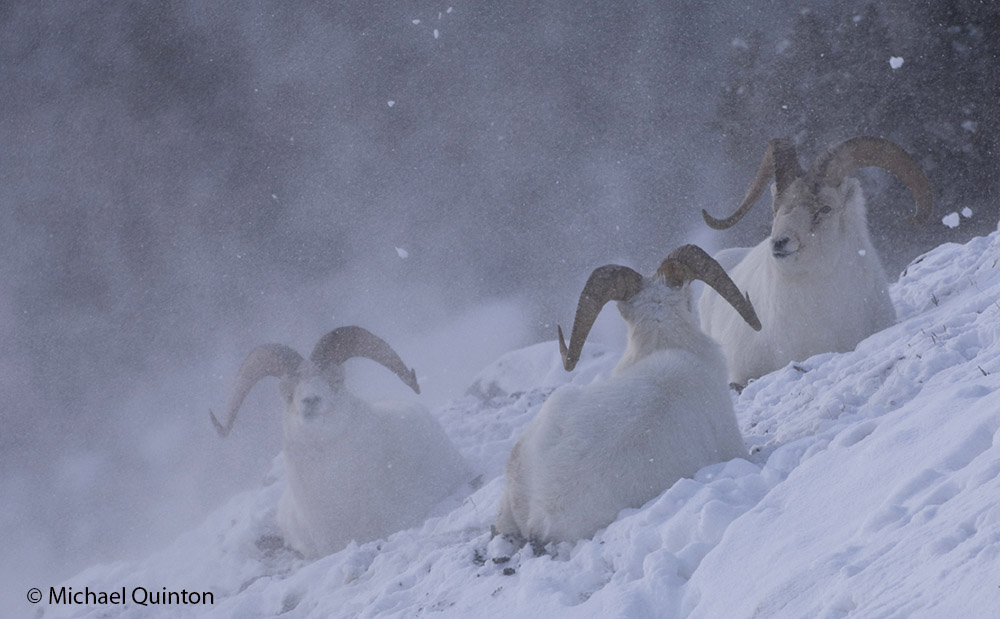 Dall rams Continue reading
Dall rams Continue reading
WILDERNESS IN WHITE
ONE OF MY FAVORITE PHOTOGRAPHIC SUBJECTS, DALL SHEEP

